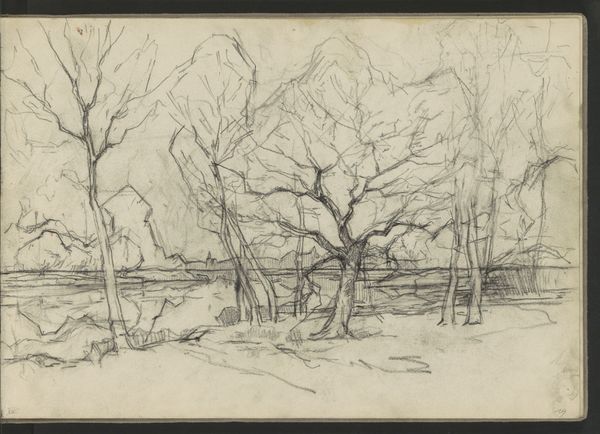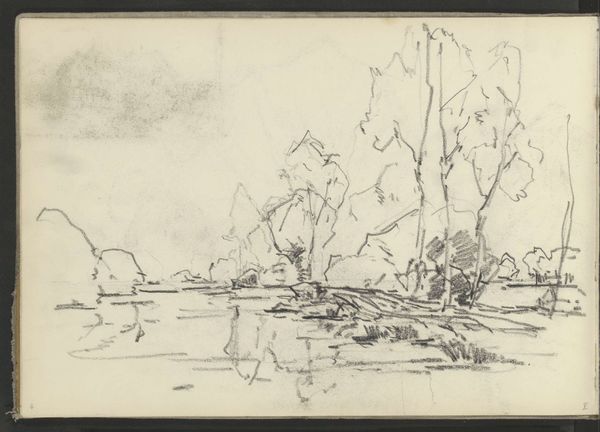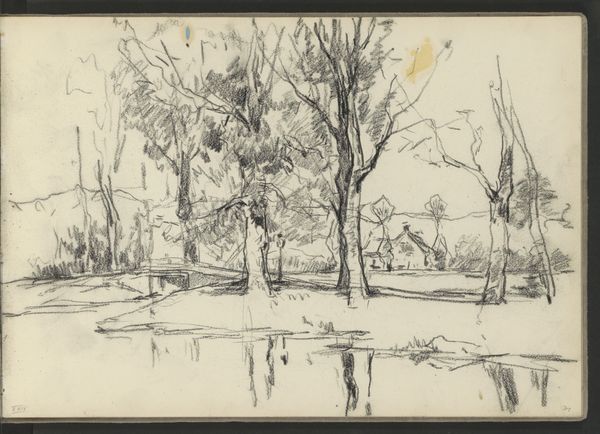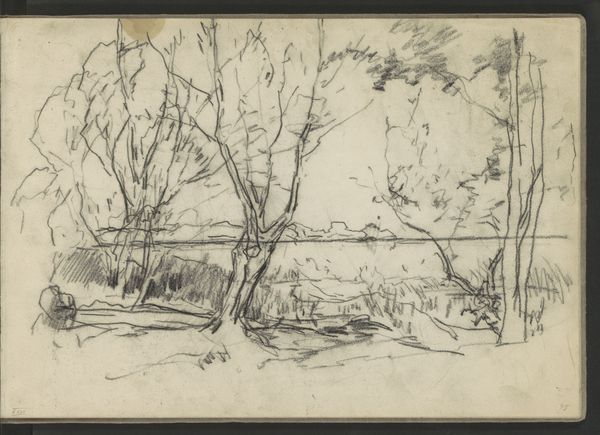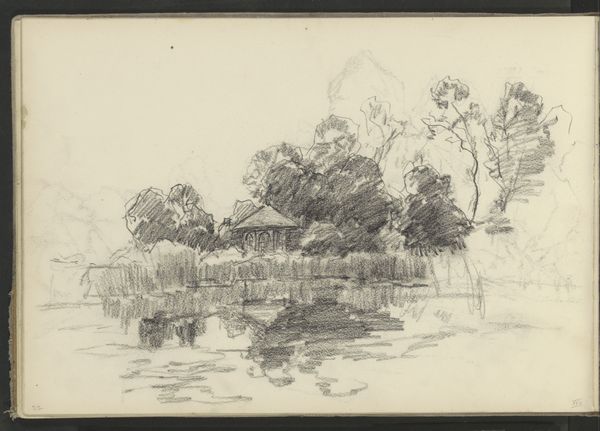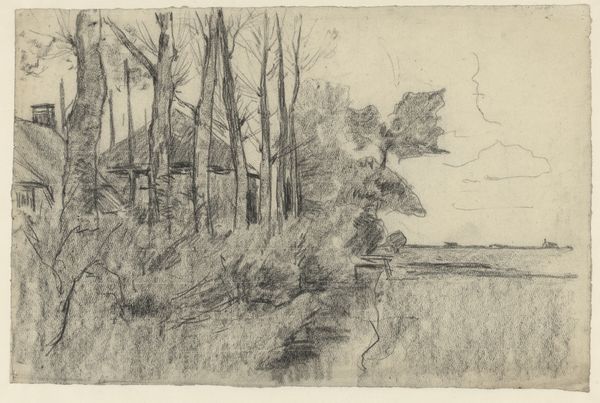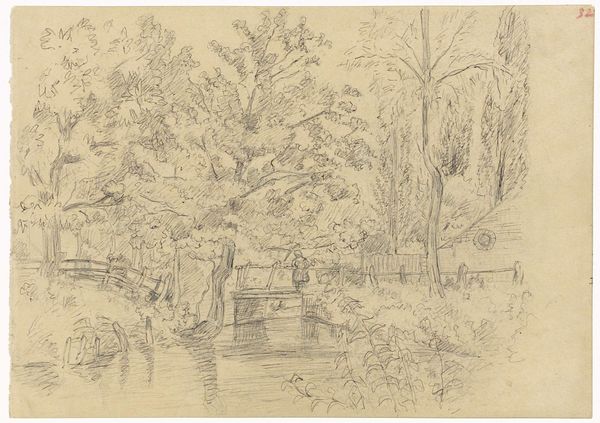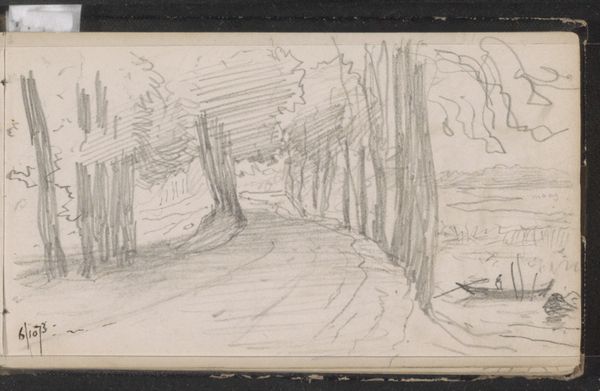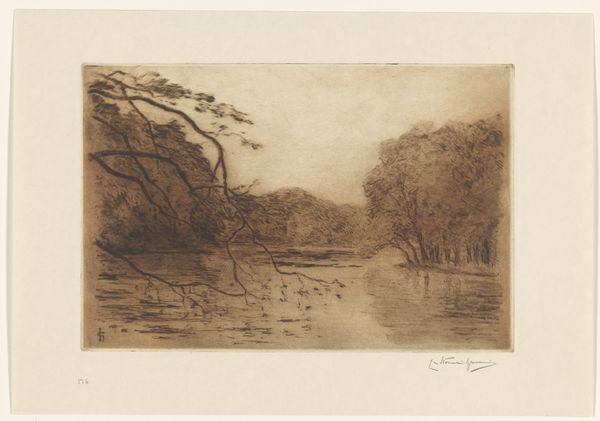
Copyright: Rijks Museum: Open Domain
Editor: This is "Landschap met brug," or "Landscape with Bridge," created around 1891 by Egbert Rubertus Derk Schaap using graphite. It feels very ephemeral and fragile, like a memory fading. How do you interpret this work, especially in its historical context? Curator: The sketch captures a fleeting moment in nature, aligning with Impressionist ideals, but it also subtly speaks to broader societal shifts of the time. The late 19th century was a period of rapid industrialization and urbanization. How might this serene landscape, almost ghostly in its rendering, function as a quiet protest or a nostalgic longing for a simpler, more agrarian past? Editor: That’s interesting. I hadn't thought of it as a protest, but more as a purely aesthetic study. Do you think the lack of detail is intentional, perhaps commenting on the artist's view of progress? Curator: Precisely. Consider the artist's position within a rapidly changing society. The sketch’s incompleteness, its lack of sharp definition, could symbolize a critique of the increasingly rigid and defined structures of modern life. The 'bridge' itself—usually a symbol of progress—appears fragile and insubstantial. Is it really connecting, or is it a false promise? Who gets to cross the bridge, and who is excluded? Editor: That’s a powerful way to look at it. So, you’re suggesting it's not just a landscape but a commentary on societal values and the cost of industrial advancement? Curator: Absolutely. By examining Schaap's landscape through the lens of social and political context, we uncover its potential to engage with conversations about progress, alienation, and the individual's relationship to the environment. It invites us to contemplate not just what is seen, but also what is absent or intentionally obscured. Editor: Wow, I’ll never look at another landscape the same way again! Thanks, that really broadened my understanding. Curator: And you've helped me see how immediate and visceral art's connection to our contemporary anxieties can be.
Comments
No comments
Be the first to comment and join the conversation on the ultimate creative platform.

